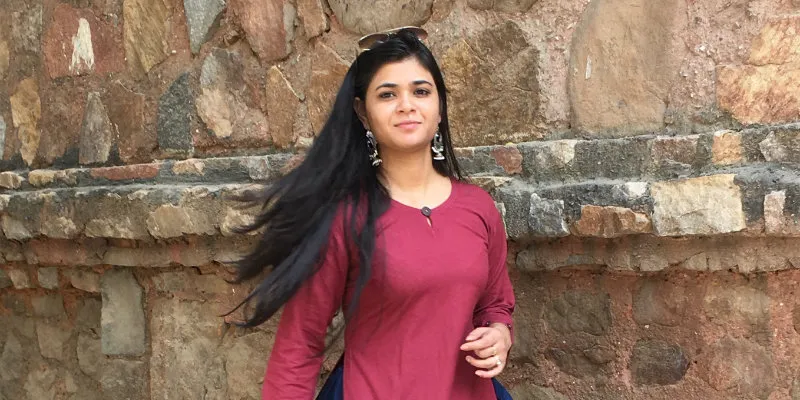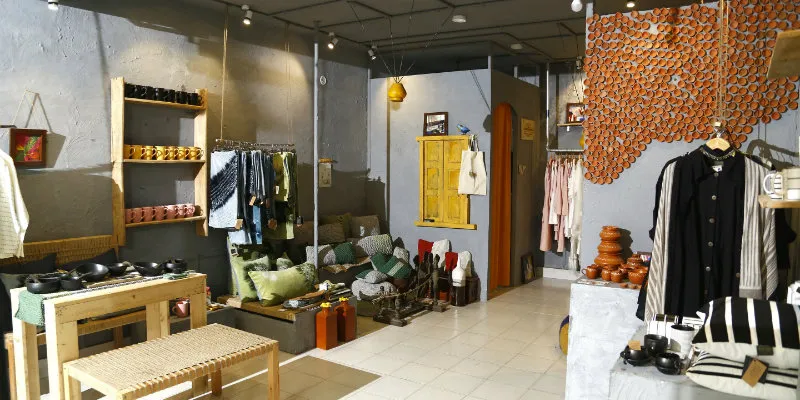This NIFT graduate is giving a twist to Indian handicraft by involving local artisans
Launched in 2015, Peeli Dori connects rural and local communities to the urban mass market with its Indo-chic lifestyle products.
Most of us look for inspiration elsewhere, little do we realise it is all around us. Niharika Choudhary (22) found her inspiration close to home when she participated in a design contest at her college NIFT, New Delhi. Every student had to showcase their creativity in the contest, and Niharika emerged winner in the category of handicraft product designs. This motivated her to explore her design ideas further and put up a product exhibition.
“The day the exhibition was scheduled, it was Basant Panchami – a day for the colour yellow and for hope and new beginnings,” Niharika recalls. Soon after, she decided to take her products to the masses and launched an e-commerce site, Peeli Dori. Dori, here, stands for the bond she wanted to create with her products.
What is Peeli Dori?
Launched in 2015, Niharika’s Peeli Dori is a lifestyle brand inspired by the people, traditions, and aesthetics of India. Its platform connects rural communities with the urban market and aims to hone their skills in contemporary design. Its Indo-chic lifestyle products include apparel, home décor, and furnishings.
After the e-commerce website, Peeli Dori has now launched its first concept store at Shahpur Jat, Delhi, in August 2017.
Niharika defines the style of Peeli Dori as ‘unadulterated raw aesthetics with a contemporary language’. She says,
“We are creating a lifestyle with Indian crafts, keeping aside the prenotion that Indian crafts cannot be made trendy in today’s day and age. It gives an edge to the story of Indian heritage, which has already been narrated in various other forms.”

Diversity drives the growth
Peeli Dori collaborates with artisans and self-help groups (SHG) to create exclusive collections of lifestyle products and apparels.
“The artisans are encouraged to come forward and are given recognition,” says Niharika.
As the sole founder, Niharika has worked with over 200 skilled craftsmen and has a team of 10 people. Niharika says, “Our pillars are the crafts representatives who we have in various clusters, at different places. They help us connect with our heritage and culture.”
Bootstrapped so far, Peeli Dori has a profit-sharing model with the artisans — it shares a percentage of profits with them to have their equal involvement and responsibility towards the product.
To give every craftsman his due recognition, all products of Peeli Dori come with a tag telling the story of the artisan behind its making
So, is the business scalable?
Niharika says it is, if one considers the diversity of crafts and their popularity in the market. However, she adds that to enter and sustain an organised business in such an unorganised sector is a challenge.
“Indians are emotional about their work. We need to build trust with our artisans by being transparent and exposing them to the market where their product reaches,” she says.
Peeli Dori has witnessed a growth of 10 percent month-on-month, with average monthly sales in their offline venture ranging from Rs 90,000-1,00,000 and online sales for Rs 50,000-60,000.
Peeli Dori has made sustainability its mandate — the products are a blend of age-old artisanal techniques and new-age design, be it the clothing line or home furnishing. Talking about that one thing that sets it apart, Niharika says, “We are narrating the handicraft tale in a very different way by completely changing the face of it.”

Market landscape
With nearly seven million artisans and 67,000 export houses, the artefact sector is one of the largest employment sectors in India. However, it is highly unorganised, and a majority of artisans predominantly belong to the weaker sections and work in the remotest areas of the country. They need upliftment, training, and access to markets.
There are a few large players such as Fabindia, Mother Earth, and Dastkar who continue to do significant work for the preservation of rural crafts. And then there are smaller, countless initiatives, just like IVEI, which are sprouting and flourishing across the nation. For instance, Sujani Looms is reviving Bharuch’s dying 150-year-old art of weaving called Sujani, by venturing into home décor.
Indore-based hand painting design studio ‘Rang Rage’ employs housewives to paint on apparel, home décor, and accessories. ‘MORA by Ritika’ works with textiles in the North-East. A number of e-commerce websites such as iTokri, Gaatha, Jaypore and Craftisan work with artisans and craftsmen everywhere, teaching them new skills and designs suited for the urban market.
In the future, Peeli Dori plans to work with more craft clusters to offer the indigenous art of India in a contemporary product line. Niharika says, “We want the masses to adopt sustainability as a lifestyle. By introducing indigenous artisans’ design with a difference, we want to make this lifestyle more reachable and affordable.”







